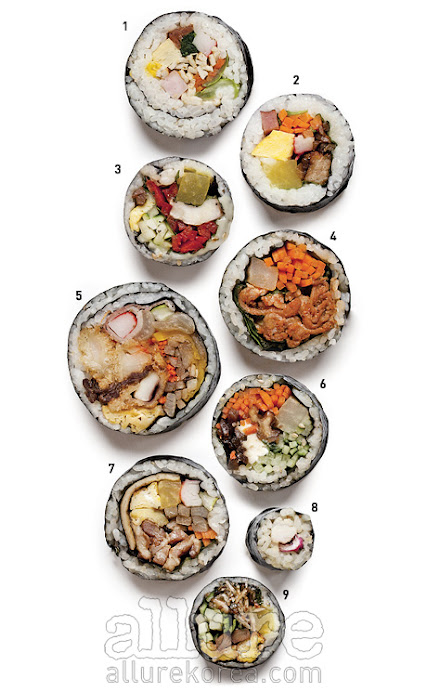[Success Trend] Trader Joe’s ‘Frozen Gimbap’ from Gumi sells out in the US market
Trader Joe's is an American grocery store based in California, USA. It was named after its founder, Joe Coolum. It started in Los Angeles in 1958 as Pronto Market, a convenience store concept. At first, it was very similar to 7-Eleven, but in 1967, it opened its first store called Trader Joe's, selling differentiated products such as fresh meat, cheese, and juice, gaining popularity among local residents. In 1993, stores began expanding into the Pacific Northwest, and in 1996, the first stores opened in eastern Brooklyn and Cambridge. Trader Joe's has developed a fan base by selling unique and unique products that are significantly different from existing supermarkets, and has become one of the most loved markets in the western United States. The success of exporting Gumi frozen gimbap to the US was a huge success here!!!
*Source_JoongAng Ilbo

Frozen gimbap made by a new food company headquartered in Gumi, Gyeongbuk, is causing a sensation in the U.S. market. Less than a month after release, the product is sold out everywhere. Kimbap, which had been mainly sold in Korean supermarkets, became a huge hit when it met a large local distribution channel.
According to related industries on the 22nd, frozen kimbap, which ‘All Got’, a kimbap manufacturer founded in 2020, began selling locally through Trader Joe’s in the U.S. early this month, is gaining great popularity. The initial batch of 250 tons containing hundreds of thousands of pieces of kimbap was sold out (completely sold) in an instant. We are currently preparing for the second delivery.
Tofu instead of meat… Popular as a plant-based health food
The product name is based on the Korean word ‘Kimbap’. Below that, an introductory phrase was included in English: ‘Korean-style seaweed roll with rice made with tofu and vegetables.’ The price is $3.99 (about 5,400 won).
Olssok said, “We quickly froze at -45 degrees Celsius to maintain the texture, and divided each row of kimbap into three pieces and placed them in a plastic container. “The secret to its popularity is that convenience has also been increased in this way,” he said. In Korea, 10 types of products, including beef bulgogi, tuna mayo, and kimbap, are being sold through SSG.com and Coupang, but due to restrictions on meat exports, only plant-based products containing tofu are being supplied to the United States.
*Source_Allgot Co., Ltd. website(https://allgotfood.imweb.me/index)
Instant kimbap, baba kimbap, eaten right out of the freezer! Stock up on 5 great flavors, starting with rice, in the freezer and use them all year long! Patented technology to thaw evenly in the microwave in 2 minutes!
Source_Maeil Business Newspaper Reporter Park Soo-ho
‘Kim bap’ is becoming an unprecedented hit at large retail stores in the United States. As the product was sold out in over 560 local stores, there were a lot of inquiries from local people asking, “When will it be in stock?” In addition, it has become a trend to post videos of heating and eating this kimbap in various ways on social media (SNS). If you search for ‘Kimbap’ on Instagram or TikTok, you can see a variety of challenge videos using it, such as the basic challenge of eating hot chicken fried noodles, locals eating it with egg coating, and videos of mothers and children tasting it together.
All-produced frozen kimbap that is actually sold at Trader Joe's stores in the United States. It is popular because it can be easily heated and eaten with a three-tier tray. (coming soon)
The company that made this kimbap is ‘All Straight Kimbab’, located in Gumi, Gyeongsangbuk-do. After being established in 2020, it has been selling kimbap in earnest in domestic and overseas markets since last year. The maximum annual kimbap production is 6,570 tons, and it has the No. 1 facility in Korea for single kimbap production. The domestic brand name is ‘Baba Kimbab’, and the PB product name sold at Trader Joe’s is ‘Kimbap’.
The founder is CEO Hojin Lee. Asung Construction, a construction materials company, ran ASP and jumped into this business after seeing the potential for K-food to expand overseas. As they were planning to expand into overseas markets as well as the domestic market, it was difficult to export meat and they had to solve the issue of expiration date, so they turned to frozen gimbap. We have reached this point today by investing billions of won over the past three years.
What people in the distribution industry are most curious about is how they were able to expand overseas, especially with large local distributors. Manager Kim Hee-cheol said, “After completing all the difficult production and quality certification procedures required by large local distribution companies, such as FSSC22000 certification, and working hard for about a year, including sample testing and delivery of the initial quantity, we were able to export this year.”
Max (residing in New York), who tasted this kimbap in the United States, said, “I was unfamiliar with the idea of frozen kimbap, but I was surprised to hear that if you put it in the microwave, you could immediately enjoy the same taste as the one you eat in Korea.” He added, “Korean kimbap is already available in the US.” There are a lot of kimbap. “It usually costs about 9 to 10 dollars, but what’s also attractive is that you can eat this kimbap for only 3.9 dollars (KRW 5,400),” he said. In addition, local people are recognizing that it is good for health because it contains fried tofu and vegetables, and because it is convenient to eat as it is packaged in a 3-tier tray with each row of kimbap divided into 3 pieces, there is a growing number of people saying, “I keep buying it.”







댓글
댓글 쓰기